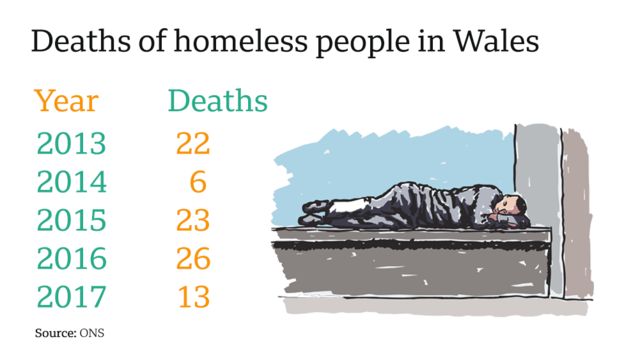How many abandoned buildings would you say there are in Wales currently?
100? 200? 500?
Well, according to recent figures, there’s a little more than 500.
As of 2017, there are at least 23,000 properties laying empty.
…Jesus Christ.
The thing is though, despite the initial shock of the statistic, it shouldn’t really come as a surprise. You go to any settled area in Wales and you are greeted with it. If you live in the South Wales Valleys, it’s almost a part of life….
…decay….rot….derelict buildings signifying former glories. All left to the weeds…all left to the elements.
‘But money issues?’ you may say. ‘Austerity has limited the funds to local councils’… Why should the council spend money on derelict buildings when there’s a litany of other issues to deal with?
And this is the issue though.
As shown over the last decade of cuts to public spending, there are various pressing issues facing local councils.
Realistically, unless there’s a windfall of money to purchase derelict lots to restore, only to inevitably sell again, no one is going to fix the problem.
And indeed, it’s almost so tragic that it’s funny, that at a time where vacant, rotting properties and absentee landlordism is so alarmingly high in Wales, we also have a growing homeless crisis.
It was only October 2018, a mere eight months ago, that nearly an estimated 500 people were sleeping rough across Wales – with an estimated 90 deaths of homeless people in Wales between 2012-2017.

(Estimated number of homeless deaths from 2013-2017 in Wales, courtesy of the BBC)
Indeed, local councils in Wales have the ability to issue a ‘compulsory purchase order’ for derelict properties, purchasing them to restore for public use. However, often it’s too expensive – or rather too much bureaucratic hassle.
All the while, more than 60,500 households are currently on social housing waitlists in Wales, described by Shelter Cymru as a ‘housing crisis’.
The Welsh Government’s response is to build 20,000 new affordable homes by 2021.
…No chance of renovating the over 20,000 derelict properties for use, is there?
And the thing is though, who can blame them? It is undeniably much cheaper and greener to build these new homes, rather than dealing with the various legal and practical challenges of restoring these derelict properties.
While there is a recent committee consultation within the Welsh Government looking at using these derelict properties for housing – which is undoubtedly a great step forwards, it is just in it’s preliminary stages.
Realistically, it will take years to even agree on a plan, let alone get it implemented.
And with no one to help, and the owners often unwilling to or actually unable to solve the issue, the question is what can local communities do with these giant, empty eyesores?
But what can be done? What are we going to do, reclaim and restore them ourselves?
Well….
Take for example Cork’s Alexander Homits.
When confronted by ‘one of Europe’s worst housing crises’ in south west Ireland, Homits and members of the Connolly Youth Movement (CYM) took it upon themselves to occupy a derelict housing block.
Quoting Homits in the Morning Star, he argued that the group ‘demonstrat[ed] the issue to the wider public, undermining the “right” of landlords to deny the homeless homes and calling into question private property itself.’
Fitting the block with a gym, plumbing and other utilities, Homits argued that at a time where both homelessness and vacant/derelict properties are at an alarming high in Ireland, the community needs to make up for the government’s (both local and national) inaction and inability.
Indeed, direct action to restore derelict buildings for community usage is progressively becoming more and more utilized.
 (Alexander Homits at the reclaimed Connolly Barracks, courtesy of The Morning Star)
(Alexander Homits at the reclaimed Connolly Barracks, courtesy of The Morning Star)
Looking further afield to the epi-centre of South America’s largest city – Sao Paulo, a similar story emerges. Marked by red flags hanging from windows, nearly 50 abandoned buildings have been ‘reclaimed’ by Brazil’s ‘Macaroni’ movement, in which squatters use occupation as a means to pressure the government to provide ‘adequate housing and give working families a place to live’.
But what if you’re not able to physically occupy a rotting building?
You know we don’t blame you… for all of our talk, we’re not out there squatting in one of Merthyr’s many, many abandoned buildings.
You could be inspired by the work of France’s ‘Les U.X’…
Working underground (quite literally at some points), this group of French urbanites spend their free time restoring unloved parts of Paris. From iconic clocks that had stopped working, to significant sections of Parisian underground, the group restores ‘those which the French government has not chosen to do or for which they lack funds.’.
What Wales needs is a bit of Elvis Presley
…a little less conversation, and a little more action.
For all the talk of change, nothing will come of it unless we take positive actions towards helping our communities.
We also realize this makes us sound intensely hypocritical. We ourselves are guilty of it.
It’s often far to easy to complain about the woes of our communities rather than go out and sort them.
Now, as a disclaimer, we’re not saying for everyone to go out and start squatting in dangerous, abandoned wrecks of buildings.
What we are saying, is that direct community action, such as in Cork, such as in Sao Paulo, and such as in Paris, can have an amazing affect.
From cleaning a roadside, to helping trim the hedges of an abandoned house, to secret midnight renovations, to…well….squatting if you were to do it (…we’re not saying anything), we have the power to reclaim and restore our communities – with or without government help.
So, the next time you see a derelict building in Wales, covered in ivy and crumbling away, think to yourself
‘…I can change this…we can change this’.
